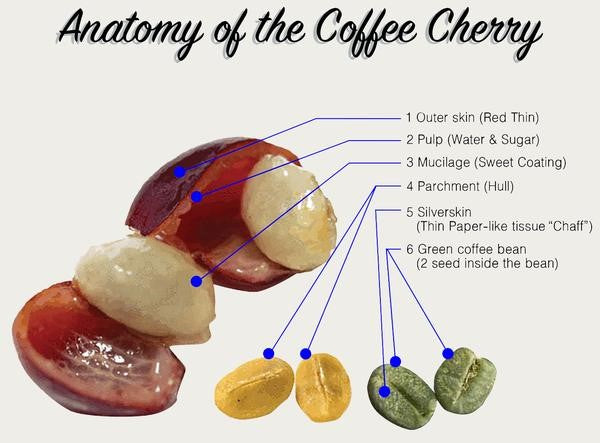Recent Post

The Coffee Cherry
Steffen Sauer
Aug 29, 2020
The purpose of coffee processing is to remove the coffee bean (the seed) from the coffee fruit or (cherry). So before explaining the different ways of how to do that we will first have a look to the anatomy of the coffee cherry.
The anatomy of the coffee cherry is similar to other stone fruits (yes coffee is a stone fruit) such as plums, peaches, almonds and olives. All stone fruits are built up of several layers. These layers can be divided into two main groups: the fruit pulp and the seed (bean). Both the outer group (pericarp) and the inner group, which houses the seeds, consist of three layers.

(Picture: Source: Coffee Lab Roasters)
The first layer of the outer group is the outer skin, when ripe the color of the cherry will be red (exemptions mentioned above). The next layer below is a thin layer known as the Pulp (Mesocarp) which houses the water and sugars. Within the pulp, there is a thinner layer known as the sweet coating (Mucilage) and another layer known as pectin. All these layers are full of sugars which makes them crucial during the coffee fermenting process.
The inner group contains the coffee beans (known as the Endosperm). You will usually find two half-beans inside each coffee cherry, and each is covered by a thin layer (silverskin), followed by a papery hull –the parchment (Endocarp).
Not every coffee cherry contains two beans, approximately 1-7% of every coffee crop are peaberry coffee beans which are comprised of one whole coffee bean rather than the typical two half-beans.
Peaberry coffee beans are esteemed for their robust taste which is thought to be due to their higher density than regular beans.
← Older Post Newer Post →



